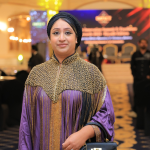Oil still pays most of the bills in Saudi Arabia, yet a fresh source of wealth is rising. Rows of servers now stand beside pump jacks, and the government treats data like a well that never runs dry. Analysts believe that smarter software could inject around 135 billion US dollars into the Kingdom’s economy by 2030, a figure once heard only in crude-oil meetings.
Vision 2030 supplies the roadmap for this shift. The plan lists scores of social and economic targets, and officials say two-thirds of them need artificial intelligence or data science to succeed. When ministries pitch new projects, they must prove that better data or simple algorithms will lift public services, trim budgets, or reach more citizens.
To make that happen, Riyadh rolled out the National Strategy for Data and Artificial Intelligence in 2020. About twenty billion dollars were set aside for related programs, and the goal is to train twenty thousand local specialists before the decade ends. A new body called the Saudi Data and AI Authority, or SDAIA, watches progress and clears red tape so start-ups can test ideas quickly.
The early results already touch daily life. In the capital, adaptive traffic lights read live camera feeds and adjust their timing to ease morning jams; drivers on treated routes report shorter commutes. Waste trucks follow routes plotted by math instead of guesswork, cutting fuel use. On the Red Sea coast, planners of the futuristic city Neom promise driverless shuttles and buildings that talk to the power grid.
Hospitals feel the change as well. At King Faisal Specialist Hospital, image-reading software now flags faint tumours that tired human eyes might miss, letting doctors act sooner. Nurses speak of faster lab results and fewer repeat scans, small improvements that add up to shorter stays and lighter bills for families.
The annual Hajj pilgrimage shows progress at scale. Millions of visitors glide through e-gates where cameras match faces with passports in seconds. Control rooms follow crowd movements on live dashboards and warn officers if a walkway grows too dense, helping prevent accidents during the busiest moments of worship.
Such feats need serious hardware, so SDAIA has signed fresh deals with chip makers and cloud giants to build new data centres across the Kingdom. Students and entrepreneurs get access to this computing muscle through grants and hackathons, spreading know-how beyond big government labs.
None of this signals the end of oil trade. It does signal that a second engine is running beside it. By pairing deep capital with young talent and clear rules, Saudi Arabia is turning desert heat into digital value. The journey is only halfway complete, but the servers keep humming, and the world is watching.












